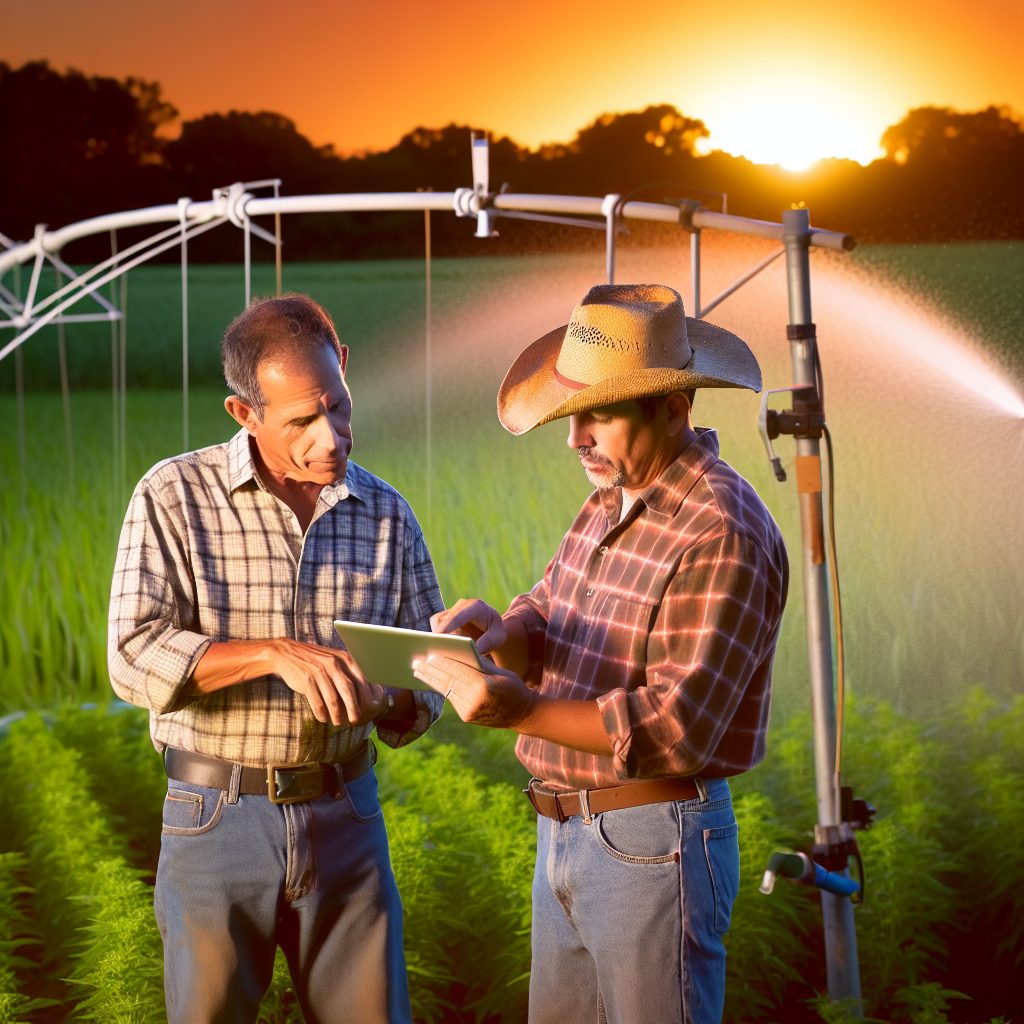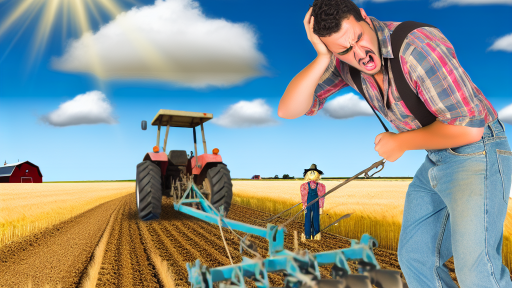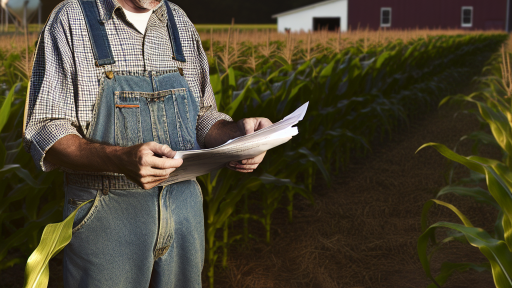Understanding Water Rights and Regulations in Agriculture
Importance of Water Rights
Water rights define the legal entitlements to use water resources.
Farmers rely heavily on these rights to sustain their agricultural practices.
Understanding these rights prevents legal conflicts over water use.
Moreover, they vary significantly by region and local laws.
Types of Water Rights
There are two primary types of water rights: riparian and appropriation rights.
Riparian rights allow landowners to use water adjacent to their property.
This method fosters responsible local water management.
On the other hand, appropriation rights are based on a first-come, first-served principle.
These rights provide farmers the ability to divert water from a source for use.
Understanding Riparian Rights
Riparian rights originate from the principles of common law.
Farmers with riparian rights can access water without a permit.
However, usage must not negatively impact neighboring landowners.
Understanding Appropriation Rights
Appropriation rights require a formal application process.
This process often includes obtaining permits from local authorities.
Farmers must demonstrate beneficial use of the water they claim.
Transform Your Agribusiness
Unlock your farm's potential with expert advice tailored to your needs. Get actionable steps that drive real results.
Get StartedIn many cases, unutilized water rights can be lost over time.
Regulations Governing Water Use
Farmers must comply with various federal and state regulations.
The Clean Water Act plays a crucial role in protecting water quality.
This act mandates permits for discharging pollutants into waterways.
Additionally, local agencies often implement regulations tailored to specific areas.
Key Regulations to Consider
- Permitting requirements for water usage
- Limitations on water withdrawal during drought conditions
- Guidelines for water conservation practices
Impact of Water Management Practices
Effective water management is vital for sustainable agriculture.
Optimizing water resources improves crop yields and promotes efficiency.
Farmers can implement practices like rainwater harvesting and drip irrigation.
These methods significantly reduce water waste and enhance conservation.
Benefits of Responsible Water Use
- Increased crop productivity
- Reduced environmental impact
- Improved compliance with water regulations
Staying Informed About Water Rights
Farmers must stay up-to-date on changing water laws.
Joining local farming organizations can provide valuable resources.
Additionally, engaging with legal experts ensures compliance and sustainability.
Staying informed ultimately empowers farmers to manage resources responsibly.
Best Practices for Efficient Irrigation Systems
Assessing Water Needs
Start by understanding the specific water needs of your crops.
Consider factors like the type of crop, soil composition, and climate.
This assessment allows for tailored irrigation strategies.
Choosing the Right Irrigation System
Select an irrigation system based on your farm’s layout and water source.
Drip irrigation often provides efficiency for row crops.
Sprinkler systems are effective for larger fields and variable terrain.
Scheduling Water Applications
Implement a schedule that aligns with plant growth stages.
Watering early in the morning helps reduce evaporation rates.
Additionally, use moisture sensors to optimize watering times.
Regular Maintenance of Irrigation Systems
Regularly check for leaks or clogs in your irrigation systems.
Maintaining equipment ensures optimal performance and efficiency.
Showcase Your Farming Business
Publish your professional farming services profile on our blog for a one-time fee of $200 and reach a dedicated audience of farmers and agribusiness owners.
Publish Your ProfileConsider seasonal checks to prepare for irregular weather patterns.
Utilizing Rainwater Harvesting
Capture rainwater for irrigation use to supplement water needs.
This practice minimizes reliance on external water sources.
Design storage systems that fit your farm’s specific requirements.
Monitoring and Adjusting Usage
Keep track of water usage data for informed decisions.
Use this data to adjust irrigation practices as necessary.
Effective monitoring leads to better resource management.
Assessing Soil Moisture Levels and Their Impact on Water Usage
Understanding Soil Moisture
Soyl moisture refers to the amount of water present in the soil.
This water is crucial for plant growth and sustenance.
Furthermore, understanding soil moisture levels aids in determining irrigation needs.
Methods for Measuring Soil Moisture
Farmers can use various methods to assess soil moisture levels.
One common method is utilizing a soil moisture sensor.
These sensors provide real-time data on moisture content.
Alternatively, farmers can employ the feel and appearance method.
This method relies on tactile assessment of the soil’s texture and moisture levels.
Impact of Soil Moisture on Crop Health
Soil moisture significantly affects crop health and productivity.
When soil is too dry, plants can suffer from stress.
Conversely, overly saturated soil can lead to root rot.
Maintaining optimal moisture levels promotes robust plant growth.
Effective Water Usage Strategies
Farmers should adopt strategies for effective water usage based on soil moisture data.
Implementing drip irrigation can conserve water efficiently.
Additionally, using cover crops can enhance soil moisture retention.
This practice reduces evaporation during hot weather.
Legal Considerations for Water Use
Understanding local water usage regulations is essential for farmers.
Farmers must ensure compliance with water rights laws.
Maintaining proper records of water usage can prevent legal issues.
Being informed encourages responsible and sustainable practices.
Discover More: Sustainable Farming Practices Under New Laws
Implementing Rainwater Harvesting Techniques on Farms
Introduction to Rainwater Harvesting
Rainwater harvesting collects and stores rainwater for agricultural use.
Farmers can reduce their dependency on conventional water sources.
This method offers an eco-friendly approach to irrigation.
Benefits of Rainwater Harvesting
Harvesting rainwater improves water conservation efforts.
It lowers water bills significantly in the long term.
Additionally, it enhances crop yield and quality.
Designing a Rainwater Harvesting System
Start by assessing the farm’s water needs and rainfall patterns.
Install gutters and downspouts to direct water from roofs.
Transport collected water to storage tanks or cisterns.
Consider the capacity and materials for the storage system.
Maintenance Practices
Regularly inspect gutters and downspouts for blockages.
Clean storage tanks to prevent algae buildup and contamination.
Showcase Your Farming Business
Publish your professional farming services profile on our blog for a one-time fee of $200 and reach a dedicated audience of farmers and agribusiness owners.
Publish Your ProfileMoreover, check filters and divert any debris from entering the system.
Legal Considerations
Research local regulations regarding rainwater harvesting.
Ensure compliance with permits and usage guidelines.
Collaborate with local agricultural agencies for resources.
Case Studies
Many farms globally successfully implement rainwater harvesting.
The Greenfield Farm in Texas saw a 30% reduction in water costs.
Similarly, Sunny Acres in Hawaii improved crop resilience through this method.
Getting Started
Begin by evaluating your farm’s specific requirements.
Engage with experts to design a suitable system.
Involve your community to share knowledge and resources.
Ultimately, taking these steps supports sustainable practices.
Uncover the Details: Zoning Compliance Tips for Modern Farmers
Utilizing Technology and Sensors for Optimal Water Management
Introduction to Smart Water Management
Farmers can now manage water resources smarter than ever before.
Modern technology offers innovative solutions for effective water use.
Adopting these tools helps grow crops more sustainably.
Importance of Soil Moisture Sensors
Soil moisture sensors provide real-time data on moisture levels.
These sensors help farmers determine when to irrigate.
This not only saves water but also promotes healthier crops.
Farmers can make better decisions based on accurate data.
Leveraging Weather Forecasting Tools
Weather forecasting tools assist farmers in planning irrigation schedules.
These tools analyze rainfall patterns and temperature forecasts.
With this information, farmers can adjust their water usage accordingly.
As a result, they minimize unnecessary water expenditure.
Using Drip Irrigation Systems
Drip irrigation is an efficient method for delivering water directly to roots.
This system reduces waste by targeting specific plants.
Farmers experience improved yields while using less water.
Moreover, it allows for better nutrient distribution in the soil.
Implementing Smart Irrigation Controllers
Smart irrigation controllers automate watering schedules based on sensor data.
These devices adjust watering based on plant requirements and weather conditions.
Farmers enjoy reduced water usage without sacrificing crop health.
Additionally, these systems can be managed remotely for convenience.
Data Management and Analysis
Utilizing data management software enhances water management practices.
This software collects and analyzes data from various sensors.
Farmers can visualize trends and optimize irrigation strategies.
The result is better resource allocation and higher productivity.
Ensuring Legal Compliance
Farmers must comply with local water regulations and laws.
Keeping informed about these laws is essential for sustainable farming.
Technology can aid in tracking water usage and ensuring compliance.
This reduces risks associated with legal penalties.
Explore Further: Strategies for Exporting Farm Produce
Showcase Your Farming Business
Publish your professional farming services profile on our blog for a one-time fee of $200 and reach a dedicated audience of farmers and agribusiness owners.
Publish Your Profile
Legal Considerations for Water Usage and Compliance
Understanding Water Rights
Water rights play a crucial role in farm water usage.
Farmers must understand the legal framework governing water rights.
These rights vary by state and can depend on local regulations.
Rights often include surface water, groundwater, and stormwater usage.
It is essential to determine which types apply to your operations.
Permitting and Licensing Regulations
Many regions require permits for agricultural water use.
Farmers must apply for these permits prior to utilizing water sources.
Neglecting to obtain necessary permits can lead to hefty fines.
It is wise to consult local government offices for guidelines.
This proactive approach also ensures compliance with state laws.
Water Usage Reporting Obligations
Some jurisdictions impose reporting requirements on water usage.
Farmers need to document how much water they consume annually.
This data helps regulators manage water resources sustainably.
Moreover, accurate reporting ensures compliance with legal obligations.
It is advisable to keep detailed records for future audits.
Environmental Regulations and Responsibilities
Farmers must adhere to environmental regulations affecting water use.
These regulations often aim to protect local ecosystems and waterways.
Implementing sustainable practices can help mitigate environmental impact.
Engaging with local conservation efforts often benefits farming operations.
Understanding these responsibilities fosters a culture of stewardship.
Best Practices for Legal Compliance
Adopting best practices can ease compliance with water regulations.
Regularly review local laws and regulations regarding water usage.
Consider participating in local agricultural committees.
These committees can provide valuable information and resources.
Additionally, seek advice from legal experts in agricultural law.
Discover More: Tax Filing Tips for Successful Farmers
Educating Farmers on Sustainable Water Practices
Understanding Water Management
Water management is essential for successful farming.
Farmers must understand the sources of their water.
Knowledge about water conservation helps sustain resources.
Implementing Efficient Irrigation Techniques
Farmers can adopt efficient irrigation methods.
Drip irrigation delivers water directly to plant roots.
This method reduces waste and maximizes efficiency.
Additionally, sprinklers can be adjusted for optimal coverage.
Regular maintenance is crucial for any irrigation system.
Collecting and Using Rainwater
Capturing rainwater is an effective strategy for farmers.
This practice reduces dependency on groundwater.
Rainwater harvesting systems are easy to install.
Farmers can store large amounts for dry periods.
Utilizing Soil and Crop Management Practices
Healthy soil retains moisture better than degraded soil.
Crop rotation enhances soil fertility and structure.
Showcase Your Farming Business
Publish your professional farming services profile on our blog for a one-time fee of $200 and reach a dedicated audience of farmers and agribusiness owners.
Publish Your ProfileUsing cover crops prevents erosion and retains water.
Monitoring Water Usage
Farmers should regularly monitor their water usage.
Implementing sensors can provide real-time data.
Monthly reviews of water use help identify inefficiencies.
Promoting Awareness and Training
Training programs raise awareness about sustainable practices.
Workshops can introduce new technologies and techniques.
Collaborating with local agricultural organizations enhances learning.
Evaluating the Economic Impact of Water Management Strategies
Understanding Water Management Costs
Water management strategies incur various costs that farmers should evaluate.
Initial setup expenses include irrigation systems and water conservation technologies.
Ongoing maintenance costs also contribute to the overall expense of these strategies.
Farmers must analyze these costs to determine potential returns on investment.
Moreover, comparing these costs against predicted savings is essential.
Potential Savings from Efficient Water Use
Implementing efficient water use practices can yield significant savings.
Reduced water bills directly improve a farm’s economic standing.
Additionally, healthier crops result from optimized water usage.
Increased yields and quality often correlate with effective water management.
Thus, higher profits may naturally follow improved crop conditions.
Government Incentives for Water Conservation
Many governments offer financial incentives for sustainable water practices.
For instance, grants help farmers offset initial costs of new technologies.
Moreover, tax breaks are often available for adopting eco-friendly solutions.
Farmers like Emily Johnson have successfully utilized these incentives.
Such support encourages greater adoption of water-saving practices.
The Long-Term Benefits of Sustainable Practices
Investing in sustainable water practices leads to resilience against drought.
Farmers secure their water supply through proactive management techniques.
This adaptability is critical in an era of climate variability.
Moreover, sustainable practices promote environmental health.
Consequently, healthier ecosystems support overall agricultural productivity.
Case Studies of Successful Water Management
Several farms demonstrate successful water management strategies in action.
The Green Valley Ranch in California adopted drip irrigation systems.
They reduced water usage by 30 percent while increasing crop yields.
Such examples highlight the effectiveness of innovative practices.
Additionally, the Lakeside Farm implemented rainwater harvesting.
As a result, they significantly lowered their reliance on municipal water.
The Importance of Economic Evaluations
Evaluating the economic impact of water management strategies is crucial.
Farmers must consider costs, potential savings, and government support.
Ultimately, sustainable practices enhance profitability while protecting resources.
Thus, effective water management stands as a pillar of modern agriculture.
Additional Resources
Pesticide Laws and Regulations Study Guide; 3rd Edition
United States Department of Agriculture FY 2025 BUDGET SUMMARY




